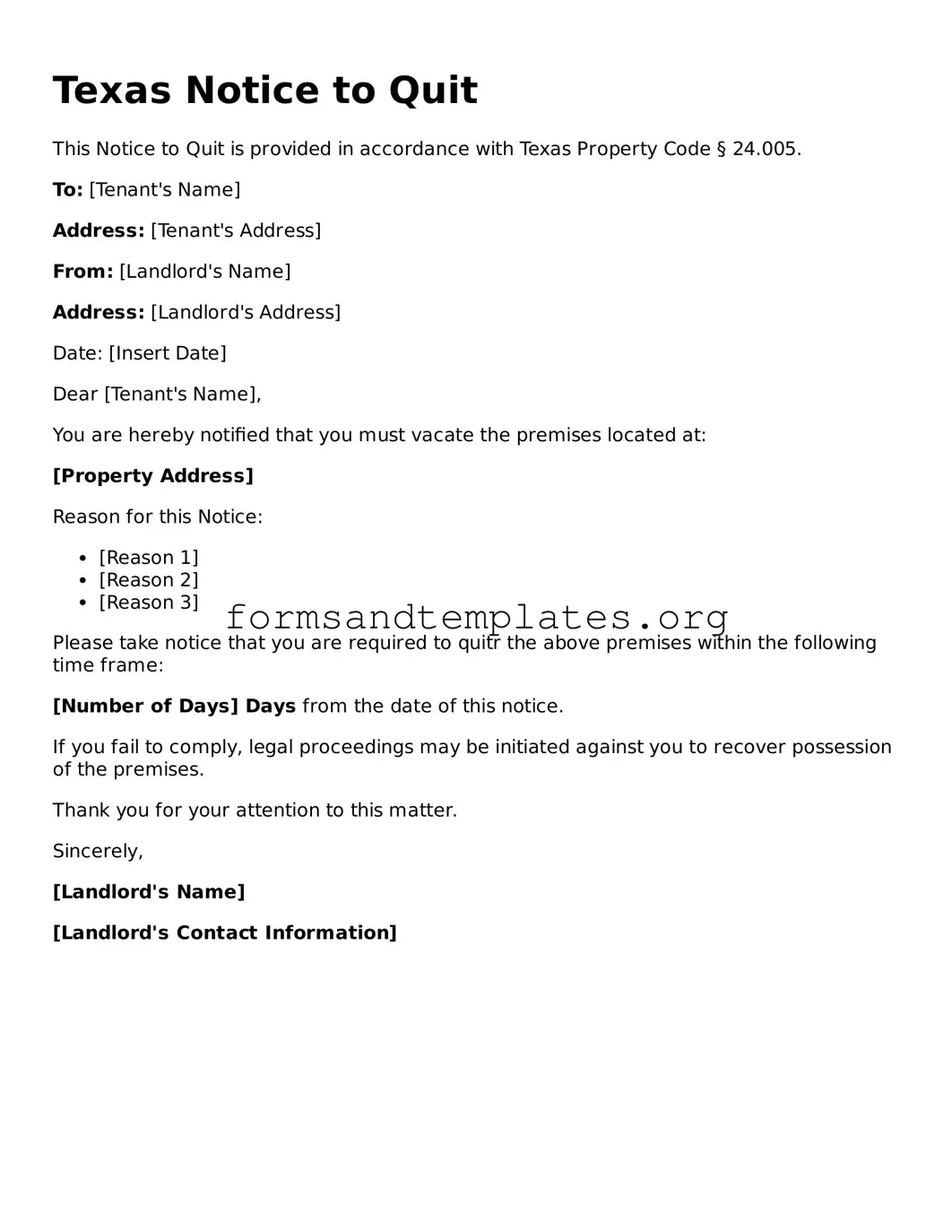A Texas Notice to Quit form is a legal document that a landlord uses to inform a tenant that they must vacate the rental property. This notice is typically issued when a tenant has violated the terms of the lease or has not paid rent. The form serves as an official warning and outlines the reasons for the eviction.
When is a Notice to Quit necessary?
A Notice to Quit is necessary when a landlord needs to terminate a lease agreement due to specific reasons, such as:
-
Non-payment of rent
-
Violation of lease terms
-
Illegal activity on the premises
It is an essential step in the eviction process, providing tenants with a chance to rectify the situation or prepare to move.
How much notice must be given to the tenant?
The amount of notice required can vary depending on the reason for eviction. Generally, landlords must provide:
-
3 days for non-payment of rent
-
7 days for lease violations
-
30 days for month-to-month leases without cause
Always check local regulations, as they may have specific requirements.
What should be included in the Notice to Quit?
The Notice to Quit should include the following details:
-
The date of the notice
-
The tenant's name and address
-
The reason for the eviction
-
The date by which the tenant must vacate
-
The landlord's contact information
Providing clear and complete information helps avoid confusion and potential disputes.
Can a tenant contest a Notice to Quit?
Yes, tenants have the right to contest a Notice to Quit. If they believe the notice is unjust or if they have rectified the issue (like paying overdue rent), they can communicate with the landlord. If necessary, tenants can also seek legal advice or respond through the court system.
What happens if the tenant does not leave by the deadline?
If the tenant fails to vacate the property by the deadline specified in the Notice to Quit, the landlord can proceed with filing an eviction lawsuit. This process typically involves a court hearing where both parties can present their case. If the court rules in favor of the landlord, a judgment will be issued, allowing the landlord to take further action to remove the tenant.
Is a Notice to Quit the same as an eviction notice?
While a Notice to Quit is often the first step in the eviction process, it is not the same as an eviction notice. The Notice to Quit serves as a warning and gives the tenant time to address the issue. An eviction notice is issued after the tenant has failed to comply with the Notice to Quit and typically follows a court ruling.
Can a landlord give a Notice to Quit for any reason?
No, a landlord cannot issue a Notice to Quit for any reason. They must have a valid legal basis, such as non-payment of rent or lease violations. Additionally, landlords must follow state and local laws regarding eviction processes to ensure the notice is enforceable.
You can find a Texas Notice to Quit form through various sources, including:
-
Online legal document providers
-
Local courthouse websites
-
Real estate or landlord-tenant organizations
Ensure that the form you use complies with Texas law and includes all necessary information.
